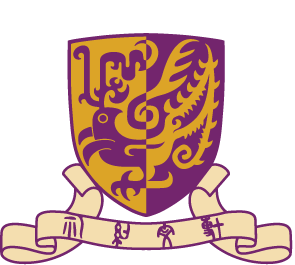
 | 70th Congregation (2011)Dr. JU MingDoctor of Literature |
‘Change. I have always embraced change.’ A line uttered by so many, so often that it loses meaning. But when eminent sculptor, the 73-year-old Dr Ju Ming says it with the simplicity of sincerity, it stirs the heart, because this is what he has been doing all his life. He believes that change is crucial for breakthroughs and innovations in art. ‘Change’ is the essence of his artistic life and the only exception to that is his steadfast faith in change.
Born in 1938 in Tunghsiao Township in Taiwan’s Miaoli County, Dr Ju apprenticed under fellow townsman Lee Chin-chuan, learning drawing and the carving of traditional artefacts. This laid a solid foundation for his career as a sculptor and paved the way for his eventual success. Just shy of 20, he finished his apprenticeship, and the artefact carving business he subsequently established went from strength to strength. He opened a workshop and took in apprentices of his own. The business was flourishing and kept him busy, which led him to start thinking about how to keep his creative work free from constraints of others or monetary concerns. It was then a major decision was made – he would be a sculptor and never again a businessman. In 1966, his work ‘Shuang Yue’ won the Prize of Excellence for Sculpture at the 21st Taiwan Art Exhibition; the following year, ‘Jiu Bie’ bagged Third Prize for Sculpture at the 22nd Taiwan Art Exhibition.
When he was 30, Ju Ming was striving to put his foot in the door of fine arts. One day, bringing his favourite works, he knocked on the door of master-sculptor Yuyu Yang with the intention of showing them to him. The two men talked for two hours ending with Yang agreeing to take Ju under his wing. Yang gave the young Ju Chuan-tai the pseudonym ‘Ju Ming’, marking the metamorphosis of a ‘craftsman’ into an ‘artist’. Ju Ming was deeply influenced by his teacher’s creative emphasis on the spirit and the soul. He kept Yang’s simple philosophy of ‘paring down’, letting go of previously acquired skills and preconceptions to free his work from realism while retaining its essence. In 1976, Ju Ming mounted his first individual exhibition at the Museum of History. And he stunned the world – a huge success on all critical fronts, with so many viewers that the museum extended the five-day show to a year. Ju Ming had gained a sure foothold in the artistic arena. In the same year, he won the 17th Arts Award from the Chinese Cultural and Arts Association and the Second National Award for Arts, and was named one of the 14th Ten Outstanding Young Persons.
Despite his debut triumph, Ju Ming did not confine himself to a rural style, but rather, sought to develop what came later to be celebrated as the ‘Taichi Series’. This fresh endeavour had stemmed from Yuyu Yang’s advice to the then puny Ju Ming that he learn taichi to boost his weak constitution. So he practised for health and ended turning it into sculpture. In 1977, he held his first exhibition overseas, mounting the 28 wood sculptures of the ‘Taichi Series’ in Tokyo Central Art Museum, to overwhelming applause. Though Taiwan’s cultural circles were of two minds about Ju Ming’s change of artistic direction, one thing was sure – he had the unflinching support of Master Yang who told him, ‘This is the way to go!’ Ju himself also insisted on ‘change’, fearlessly breaking new grounds as an artist.
In 1980, Ju Ming floored Hong Kong’s cultural circles with an individual exhibition held in the city at the invitation of the Hong Kong Arts Festival. Not one to rest on his Asian laurels, he left for the US in the same year to try his luck. In a small garage in New York, flouting the limitations of material and venue, he created the brand new ‘Living World Series’. When it was first shown at Max Hutchinson Gallery, the owner called it a ‘miracle’ because it was extremely rare for artists debuting in New York to be able to sell their works, and on top of that, Taiwanese artists were not particularly well known in the city. From Tongsiao to Taipei and from Taipei to New York, Ju Ming’s creations underwent a series of breakthroughs. Founder of Echo Magazine, Huang Yongsong said of his works, ‘‘His original rural themes were ‘Taiwanese’, ‘Taichi’ was ‘Chinese’, and ‘Living World’ was ‘International.’ ”
The ‘Living World Series’ comprised individual or group pieces representing the manifold facets of life. Themes include Gossiping, Sport, Parachute, Formation, Armed Forces, Skirt Story, The Third Generation, Scientist, Swimming, Imprisonment, Cube, and they feature a range of media such as ceramics, styrofoam, bronze, and stainless steel. Together they reflect Dr Ju’s relentless efforts at attempting the new, his spirit of adventure, and his aesthetic belief that ‘art is the path to enlightenment’. Dr Ju likes to experiment with different media because that is how he achieves unexpected results and overcomes the limitations of materials to do whatever he pleases. He pointed out that ‘the most important things about art are its nature and its style...no one can teach you that. It’s an issue of your interior self; it takes practice.’ ‘Practice is not what is ordinarily called study, but that which requires inward development and knowing when to let go.’ In other words, when art reflects introspection and an understanding of the true nature of its being, there is perfect mastery and full justification of one’s potential.
A prolific artist, Dr Ju’s works have been exhibited in major cities across Asia, Europe and North America, planting his star firmly in the world’s artistic firmament. Some of these are installed in public spaces in these cities, with Hong Kong boasting the most number of such works. For instance, gracing the entrance to the Chinese University’s Library is ‘Gate’ of the ‘Taichi Series’. Four years ago, Dr Ju re-christened the piece with the evocative name ‘Gate of Wisdom’ and penned the Chinese calligraphy for it.
The ‘Gate of Wisdom’, an iconic landmark on the Chinese University campus, was installed here in 1987, the same year that witnessed the birth of another of Dr Ju’s pivotal concepts – an outdoor sculpture museum. Twelve years of meticulous planning and construction culminated in the materialization of the Juming Museum in Taipei in 1999. It features Dr Ju’s works scattered all over a mountainside, to allow visitors to fully immerse themselves in the fascinating dialogue between nature and Ju Ming’s masterpieces. The museum also takes up the mission of promoting education on sculpture art and children’s art education, and has been contributing to Taiwan’s art education and cultural heritage for over the past 12 years.
Dr Ju’s illustrious career has been widely honoured. In 1998, he received the Fok Ying Tung Award from the Fok Ying Tung Foundation; an Honorary Doctor of Art from Taiwan’s Fu Jen Catholic University in 2003; the Enku Grand Award from Gifu, Japan, and the Executive Yuan Cultural Award from Taiwan in 2004; and the 18th Fukuoka Asian Culture Prize, Art and Culture Prize in 2007.
Maestro Ju Ming who only had five years of schooling held his first individual exhibition at 38 and became an overnight sensation. Yet, he never stopped refining his art, breaking through the boundaries between tradition and modernity, folk and academia, medium and skill. Dr Ju has been changing all his life, building and taking down and rebuilding along his creative path. His works are full of life and rich in artistic language, stimulating thought and setting the styles of a whole era. He has also made brilliant contributions to the promotion of art and cultural heritage, through initiatives in art education and art conservation.
Mr Chancellor, may I present Dr Ju Ming for the award of the degree of Doctor of Literature, honoris causa.




